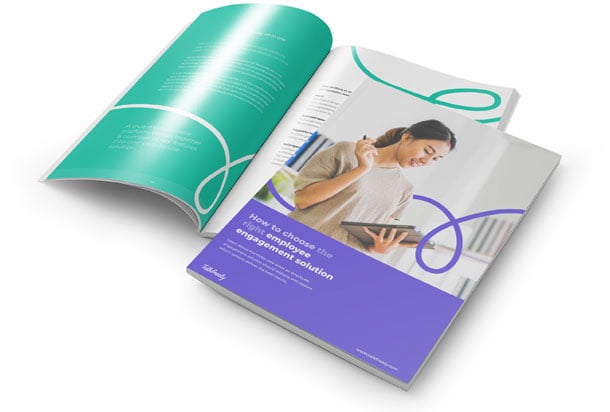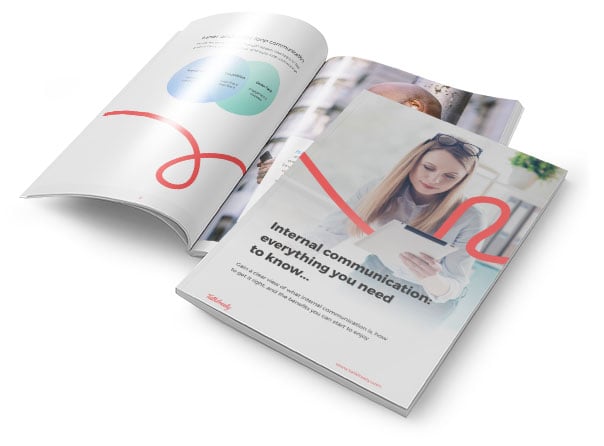Exploring the link between employee engagement and motivation is essential to realising a productive and engaged workforce, but the connection between the two is often overlooked. Without an effective employee engagement strategy, employers will struggle to cultivate a team that feels motivated to perform their best work.
The issue of motivation and employee engagement has been brought into focus with the recent pandemic. Employers are keenly aware that the restrictions, changes, and enforced isolation of the recent months have directly impacted motivation levels. With teams dispersed across the country and the resulting lack of daily interaction with colleagues, it is no surprise that employee motivation and engagement is suffering. We need to work harder than ever to ensure that the new normal delivers what employees need to perform.
To truly motivate your team, it’s essential that you first understand the different types of motivators that are available to you and how you can utilise employee engagement initiatives to create a motivated workforce.
What does employee engagement mean to you?
So, what is employee engagement? Defining employee engagement is a somewhat elusive exercise, especially when you consider the goals of different industries. With employee engagement theory a readily available online resource, the vast range of ideas, opinions and definitions highlight a more fluid concept dependant on your company’s particular needs.
Instead of trying to make your company fit a specific mould, it is more beneficial to consider exactly what employee engagement looks like to your business and use that to guide your own employee engagement definition. By specifying precisely what employee engagement means to you, you can embed the concept into your company culture and use it to lead your employee engagement strategy.
To help get you started on your company’s definition and identify employee engagement ideas that will work for you, take a step back. It can help to initially think of it as the act of creating a working environment where your employees feel both willing and able to perform their best work. With employees returning to the office and the introduction of flexible work-from-home patterns, now is the time to concentrate on improving your working environment.
The two types of employee motivation
Put simply, motivation refers to the drive that an individual feels to act in a specific way to achieve a goal. This drive is realised through two different forms of motivation – intrinsic motivation and extrinsic motivation.
- Intrinsic motivation – this refers to an employee’s innate drive to do well and take ownership of their work because they enjoy their job. They also enjoy the pride and satisfaction that they feel at a job well done.
- Extrinsic motivation – this is achieved via external factors, both positive and negative. Employees can be motivated to perform their job to receive bonuses/pay-rises or equally by avoiding negative circumstances, such as an angry manager.
To truly realise a motivated team, it is important that you introduce both intrinsic and extrinsic motivators into your employee engagement strategy, but only in their positive forms.
Utilising motivators, such as the fear of an angry manager, will only be effective in the short term before it begins to damage motivation and morale levels. This is where the difference between employee engagement vs motivation can be seen clearly. Fear of job loss or retribution will undoubtedly motivate employees to perform, but it will also have a seriously negative effect on employee engagement and retention. Whereas introducing motivators, such as bonuses and pay-rises, alongside initiatives that support intrinsic motivators, will help you establish increased motivation levels.
Why you need intrinsically motivated employees
By using employee engagement to increase motivation levels, you’ll be creating an intrinsically motivated workforce. Truly engaged employees are often intrinsically motivated.
- They are enthusiastic about their jobs
- They are keen to further their skills
- They take on challenges
- They take responsibility for their role
- They share their knowledge with colleagues
- They are committed to the success of the company
This type of work engagement is achieved by creating an environment that provides support and improves your employees’ work lives, both physically and mentally, in a genuinely thought-out process.
In contrast, an extrinsically motivated workforce is likely to require constant reminders and check-ins to produce work. Extrinsic motivation is often viewed as a short-term fix, as budgets restrict the number of bonuses and cash incentives available to employees. Fear-based motivation often leads to a disengaged and burnt-out team.
The pandemic has highlighted the vital importance of an intrinsically motivated workforce. Without managers physically present to oversee productivity levels, companies rely on employees to take personal responsibility for their work. It is now more crucial than ever to get a solid handle on employee engagement and motivation.
How to use employee engagement to increase motivation levels
Utilising employee engagement to increase motivation is a tried and tested solution, providing employers with an intrinsically motivated team that are actively engaged with their work. Understanding the drivers of employee engagement and motivation, and providing your team with factors such as a defined role, achievable goals, autonomy and recognition, is essential to realising an engaged and motivated team. These four steps will help you to harness employee engagement to increase motivation.
1. Provide defined roles
An employee that genuinely understands the remit of their role and feels that they have the correct training and skillset to perform their job will be more productive than an employee who feels unsure of their position. Providing employees with detailed job descriptions and facilitating both internal and external training to support their performance will create a workforce that feels both empowered and confident in their roles.
Utilising employee engagement software enables companies to create a centralised location for training and knowledge sharing, equipping your employees with the tools that they need to best perform their roles.
2. Set achievable goals
Providing your employees with regular targets and goals to strive towards is a tried and tested motivator. Often, when employees have a specific target to aim for, they become passionate and committed to tackling tasks and overcoming challenges to achieve their target. Achieving this type of progress is a key intrinsic motivator, with employees feeling a sense of accomplishment and importance when a goal is met.
People who get positively challenged are more likely to stay intrinsically motivated. This is a chance to allow employees to use their talents in the workplace and contribute their ideas. Consider implementing an employee engagement app with an innovation module. By providing a platform for employees to put forward ideas and take on challenges, you’ll encourage a company-wide ethos of improvement.
3. Give them autonomy
Providing employees with autonomy and an understanding of the importance of their work is an especially effective and positive way to intrinsically motivate staff. Employees who are given ownership over their work are much more likely to be encouraged to perform to a high standard. This ownership shows employees that you trust them to manage their own workload and helps them to understand how they fit into the broader organisation, creating a sense of belonging and reinforcing commitment to company success.
Employee autonomy has become part and parcel of remote working, and many businesses have found it has a dramatic effect on engagement levels. While it was initially feared that employees working from home would be less productive, it transpired that the newly found autonomy had the opposite effect. A recent study by Stanford revealed that employees working from home were 13% more productive. The employees also reported greater work satisfaction.
4. Recognise their successes
In contrast to the above intrinsic motivators, recognition is an extrinsic motivator that helps to keep employees engaged with their work. People naturally crave recognition for a job well done, and it helps to show that you are just as engaged with your employees as they are with you. This is easily achieved by utilising an employee app to publicly recognise an employee’s performance. Public praise won’t just improve the performance of the successful employee; it will also promote a positive culture of recognition and appreciation across the company.
Unlike incentivised tasks, recognition should be viewed as a by-product of an action instead of the sole driver for performance. Utilising intrinsic motivators is essential to encouraging a high-performing team, and extrinsic motivators should simply be used to reinforce these.
Employee engagement and motivation in the post-pandemic world
Understanding how improved employee engagement increases motivation for both remote and office-based workers is essential to company success. By focusing on intrinsic motivators, you’ll foster a team that is passionate and driven to perform well, however dispersed it may be. Supporting these plans with extrinsic motivations such as bonuses and pay-rises will give an additional boost to motivation levels and put you on track to achieving your employee engagement objectives.
Implementing a solution such as an employee engagement app is an increasingly popular investment that serves to underpin your strategies. By providing a centralised place for public recognition, and an open communication channel to facilitate training and knowledge sharing, you’ll see an instant uplift in employee motivation and engagement.
Topics:
Employee Engagement








